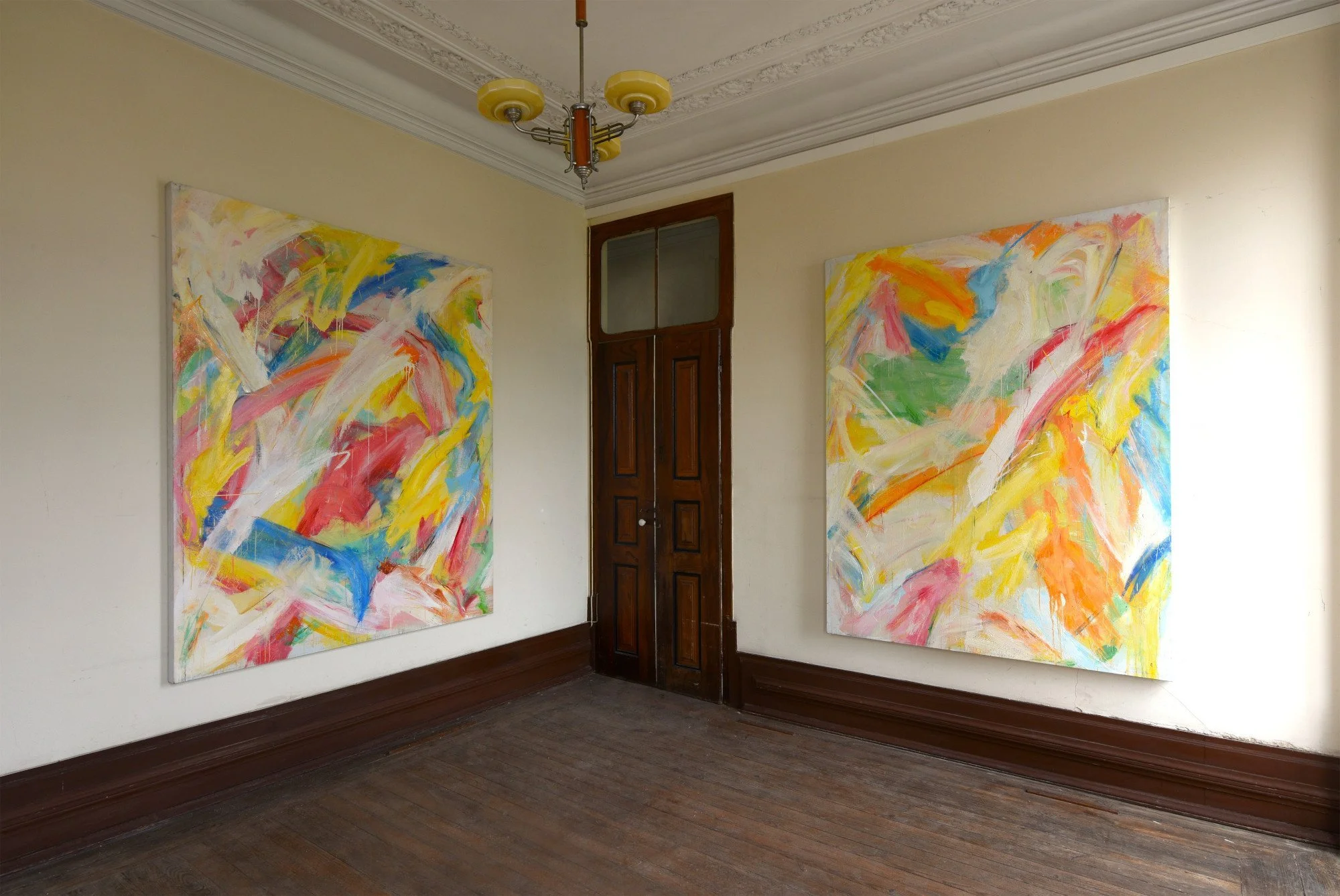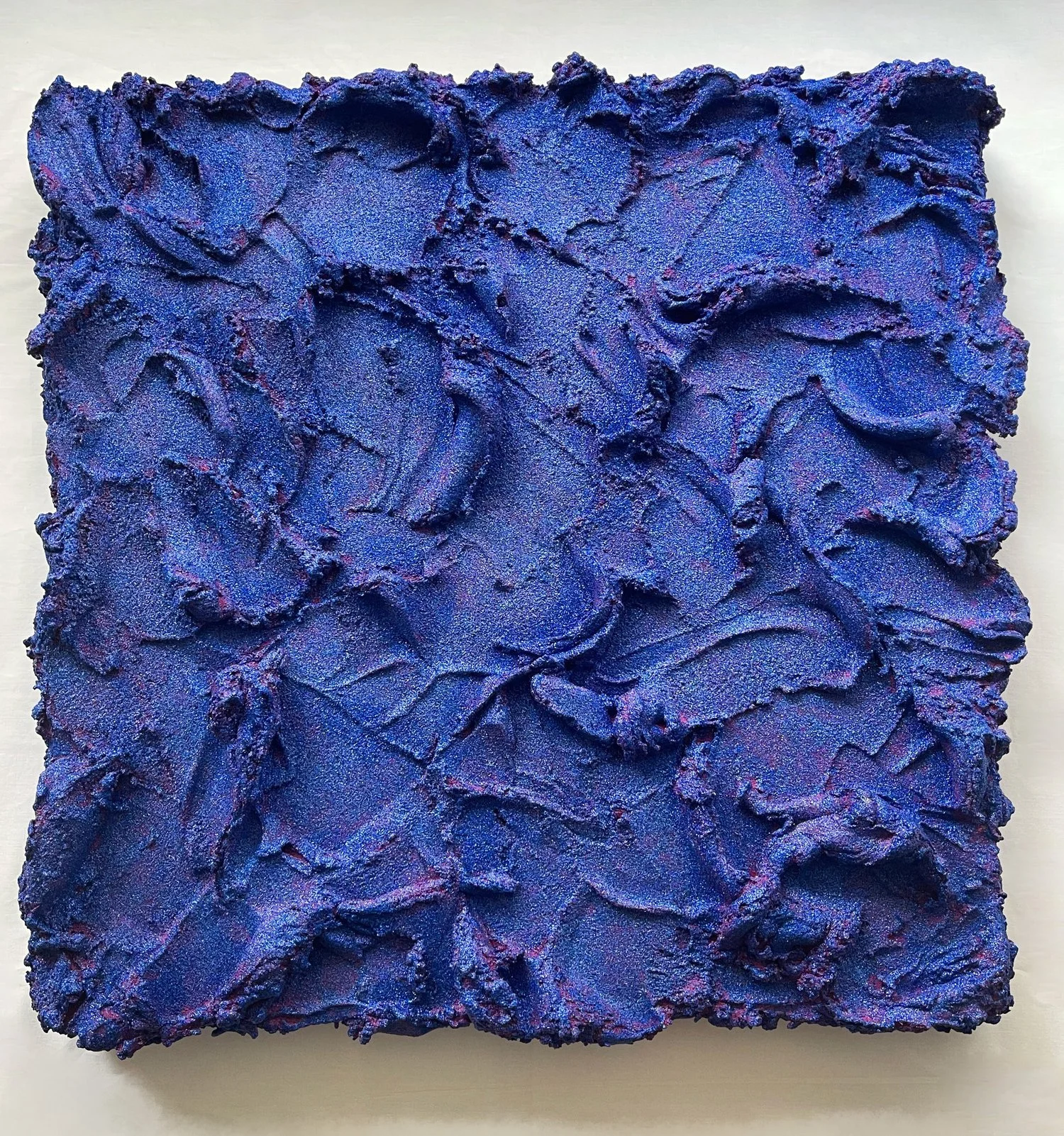10 Questions with Reiner Heidorn
Reiner Heidorn lives and works in Weilheim, Bavaria. The autodidact painter processes in his oversized and mostly monochrome paintings the relationship between man and nature. The desire to unite with nature, become one with it, and even dissolve in it - Reiner Heidorn gives form and color to this thought. Over the years of his work, he has developed his own unique painting technique and gave it a name - "Dissolutio", which means disappearance. His paintings consist of tiny microscopic elements, flowing various shades of green and blue arrange themselves in gentle transitions on the canvas. They suggest forests, lakes, plants, up to whole worlds. Thus his artistic work stands in a contemporary discourse of socially topical issues such as climate change or the alienation of man with regard to his natural environment. Reiner Heidorn's works have been shown in Brazil, Dubai, the USA, and in various German and European cities.
Reiner Heidorn portrait
ARTIST STATEMENT
"For many years, I've worked with oil-colors, and there are specific ways of handling them which sometimes lead to undesirable mistakes, like bubbles, glossy surfaces, wet and soft parts, craters in color.
There are also standard rules: Don't mix the colors on the canvas, don't use pigments without preparing them with oil and turpentine before, and pour oil on the canvas. At a certain point in my development, I had a strong wish to create something that transports the idea of disappearance, of dissolution. So I did everything possible wrong in oil painting just for the experience of having a borderless space with a universe of my own. I established all the mistakes into my own technique and worked on every painting with a yearn to dissolve myself and all the negative surroundings." - Reiner Heidorn
INTERVIEW
First of all, introduce yourself to our readers. What is your background, and when did you start experimenting with colors and painting?
I'm a German autodidact painter and work on botany in large-scale oil paintings. I use microscope images about plants and freshwater and transfer them into expressionistic paintings. With my botanical works, I want to point out the coexistence between humans and the smallest critters in every environment. Since I was 16, I always had a table with ink, paper, brushes, and pencils. The table became larger, later it was a room, and for many years now, I have a real studio. This is a very normal part of my life.
How has your artistic practice evolved over the years?
I was impressed by the expressionists like Kirchner and Nold first. Later I studied the works of Hans Hartung, Dieter Roth, and Martin Kippenberger. For over 25 years, I only painted with oil colors in large-scale works. In the last six years, I decided to work primarily on botanic and landscapes.
Blueblackhole, oil on canvas, 180 x 250 cm, 2017 © Reiner Heidorn
Your large scale paintings have almost no figurative connotations. Where do you get your inspiration from? And what would you like the viewers to experience in front of your works?
Even though I show my works internationally and educate myself a lot with other trends in art (contemporary Asian landscapes), I mainly use the direct environment in my Bavarian hometown as inspiration. I take many photos of tiny ponds, reeds and grasses, and the edges of lakes. In my studio, I then create large series out of my memory.
Since I had experiences with viewers in many countries, I determined that the reaction is mostly the same: In front of my botanic/water universes, people often feel like being inhaled, but not uncomfortable. I aim to step back behind my works and not appear in any of them personally.
You define your painting technique as “Dissolutio”. Tell us more about it.
At a certain point in my development, I felt the strong urge to leave all the material burdens. I saw all these fatal exploitations of animals, woods, and so on and just wanted to share the idea of disappearing. So I checked out fire, clouds, water, and light, all things that are dissolving in some kind. The microscope images of freshwater led me to my current technique of the speckled and energetic paintings I do now.
Distant Requiem #1, oil on canvas, 180 x 210 cm, 2021© Reiner Heidorn
Distant Requiem #2, oil on canvas, 180 x 210 cm, 2021© Reiner Heidorn
What is your creative process like? Could you walk us through a day in your studio?
I now have hundreds of canvases and don't paint every day. But when I do new stuff, I always work in series and do them in one rush. I lay all the canvases on the floor, dress in old outfits, and create very quickly and with a lot of movement (fierce and despair) and amounts of colors, turpentine, oil, the one idea I had in mind.
Is there a piece you consider a "breakthrough" in your career?
I think for a serious working artist a single piece isn't enough. One had to deliver a whole body of work with a minimum of 20 pieces. But I did have my own private breakthrough, as I invented this unique technique with liquid oil colors, allowing me to transfer the tiniest universe on large canvases.
Climate changes are an urgent issue we need to address globally. Do climate changes and environmental issues influence art in your opinion? What can be done more and how can we raise awareness through art?
There is often a discussion about how artists should be political in their work or not. I think it is a decision: When someone wants to be a political artist, he/she certainly should always address every mismanagement of societies. In my case, I want to work with the aesthetics of the oil colors and images. But I focused mainly on green botanical works to help keep an eye on the balance between humans and the existing resources. Art is one kind of education. The more people are educated worldwide, the more people will behave more humblly with their environment.
Waterreed #1, oil on canvas, 170 x 200 cm, 2020 © Reiner Heidorn
Over the past 12 months, we have witnessed a growing number of online exhibitions and live events. What do you think of the recent changes in the art world? Do you miss the art world as it was before the pandemic, or do you see more opportunity now?
The common art business and the old-fashioned model of galleries were already downgoing long before the pandemic. A new presentation on the internet has become a very powerful and serious tool if used smart and realistic. It isn't by far enough to create some works and wait in the studio for someone to come and spread the news. Online exhibitions are just one branch of the many opportunities artists can now encounter in uncountable ways - like this interview in your magazine, for example. My own art world took place this way before the pandemic, so I didn't miss anything.
Do you have any upcoming shows or collaborations you are looking forward to?
I had the great luck to have a wonderful show in Venice at the Giudecca Art District, "Texture of Fade" until the 14th of June. I enjoy everything that arises from this connection. The gallerist Jörg Heitsch in Munich is working on nice things with me, and on the 8th of June, I open a solo show at the Lei Xiang Gallery in Taipei. In September, I have ten works at an Artfair in Atlanta. Other very interesting projects are in the making, and it looks like a good 2022 for me.
And lastly, what is one lesson you learned in the past year?
Don’t take yourself so seriously.






















